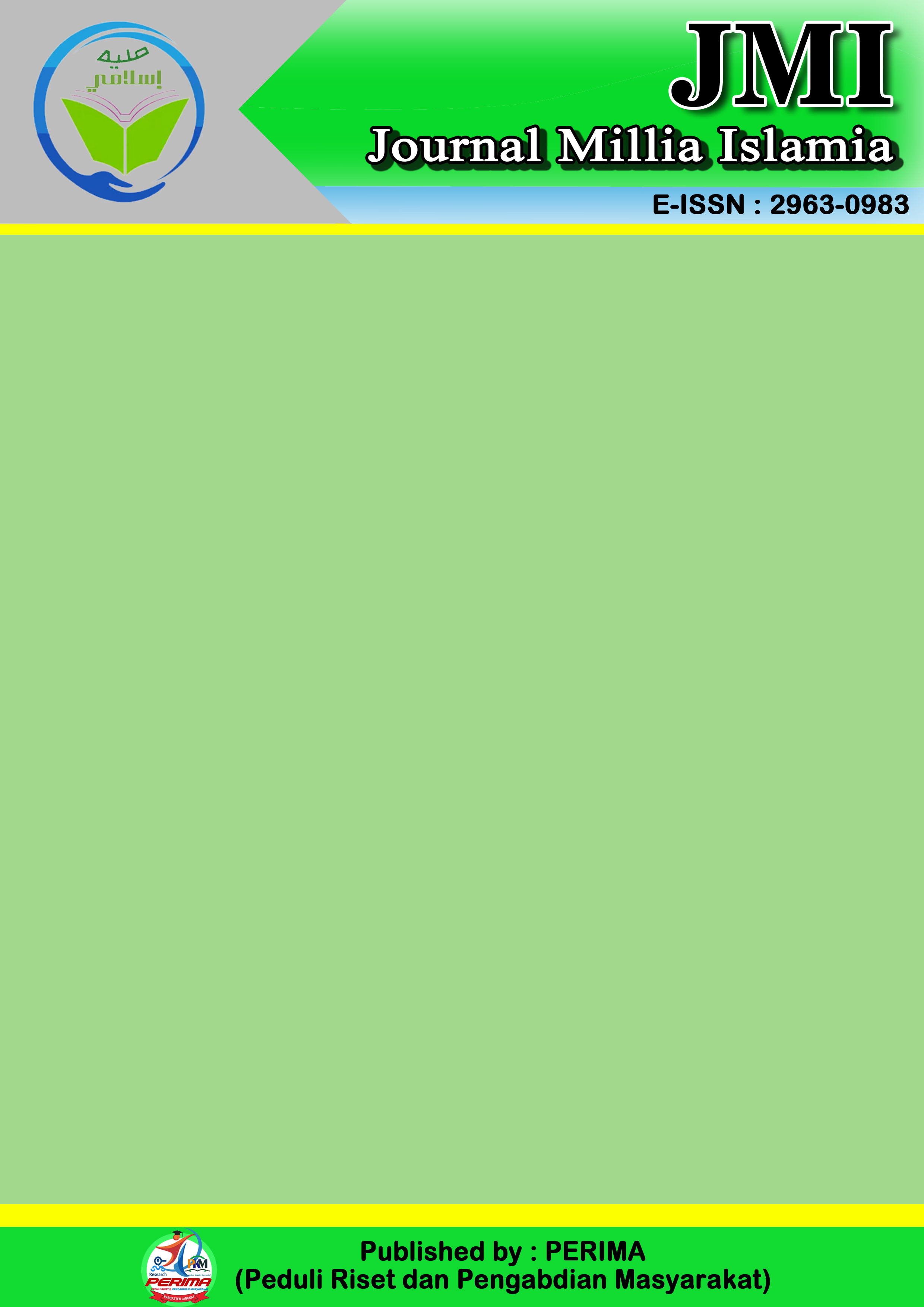Implementasi Kurikulum Merdeka Pada KMA Nomor 347 Tahun 2022 Dalam Kegiatan Belajar Mengajar Di MAN 2 Langkat
Keywords:
Students, learning motivation, GadgetsAbstract
This study aims to determine the relationship between gadget use and student learning motivation at SMP IT Adzkia Pangkalan Berandan, given the phenomenon of increasing intensity of digital device use among adolescents, which has the potential to affect their attitudes and academic achievement. The research method used is quantitative with a correlational type, where the independent variable is gadget use and the dependent variable is student learning motivation. The research population consisted of all students in class VII-A in the 2024/2025 academic year, with a sample of 35 people determined using proportional stratified random sampling techniques using the Slovin formula at a 5% error rate. Data collection was conducted through a Likert scale-based questionnaire, structured interviews, and documentation, then analyzed using validity, reliability, Pearson's correlation, simple linear regression, and t/ANOVA tests using the SPSS program. The results showed that 1) the majority of students (57.14%) were in the high and non-educational gadget usage category, with a dominant usage duration of more than 4 hours per day for entertainment, while 42.86% of students used gadgets more educationally. 2) Students' learning motivation was generally in the fairly high category with an average score of 20.40 out of a total of 25, indicating a good internal drive to achieve despite the frequent non-academic use of gadgets. 3) There is a moderate but significant relationship between gadget use and learning motivation (r = 0.455; p = 0.006), with an influence contribution of 20.7% based on regression testing, as well as a significant difference in motivation between high and low gadget user groups (t = 3.762; p = 0.001). These findings confirm that gadget use has a real influence on student learning motivation, although it is still influenced by other factors.
Downloads
References
Almourad, M., et al. 2021. Digital Behavior Reinforcement in Modern Devices. Journal of Digital Psychology, 12(3), 45–59.
Fauziah, R. 2022. “Pengaruh Penggunaan Gadget terhadap Motivasi Belajar Siswa SMP di Sumatera Utara.” Jurnal Pendidikan Dasar, 7(2), 101–115.
Hootsuite. 2023. Digital 2023: Indonesia. Jakarta: We Are Social & Hootsuite.
Kaya, A., & Gunes, E. 2023. “Smartphone Addiction and Ego Identity Formation in Adolescents.” Journal of Youth Studies, 26(4), 552–568.
LIPI. 2021. Laporan Penelitian: Dampak Gadget terhadap Motivasi Belajar Siswa. Jakarta: Lembaga Ilmu Pengetahuan Indonesia.
Macabangon, M., & Magulod Jr., G. 2024. “Parental Perception on Screen Time of Elementary Pupils and Its Impact on Learning.” International Journal of Child Education, 15(1), 23–38.
Motanya, M., Ndiritu, P., & Murage, E. 2025. “Influence of Mobile Social Media on Students' Learning Activities in Public Day Secondary Schools in Nyeri County, Kenya.” Journal of Education and Society, 14(2), 78–93.
Nasution, A. 2021. “Hubungan Intensitas Penggunaan Media Sosial dengan Prestasi Akademik Siswa SMP di Medan.” Jurnal Psikologi Pendidikan, 5(1), 34–47.
Sugiyono. 2017. Metode Penelitian Kuantitatif, Kualitatif, dan R&D. Bandung: Alfabeta.







